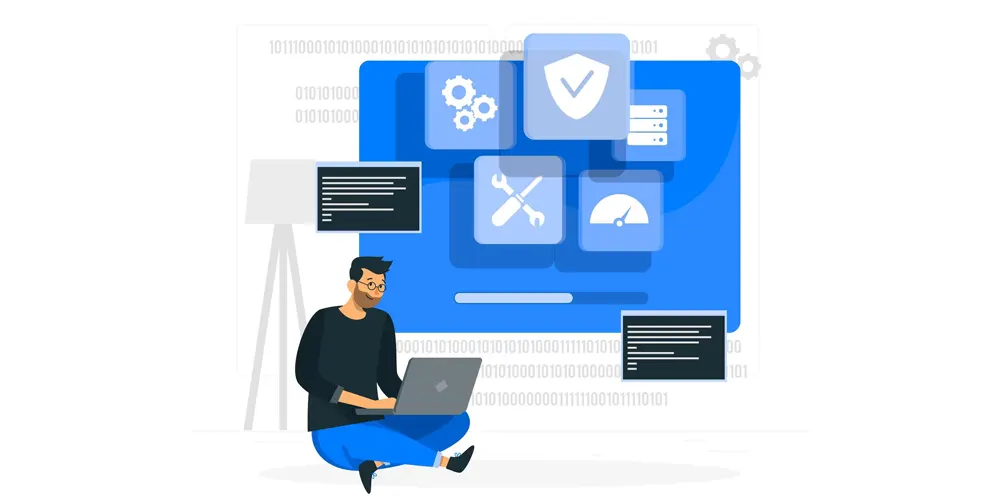How to Successfully Implement LCR is 5 Easy Steps
The pursuit of cost reduction has always been important for all businesses. While it is not the primary choice when it comes to growing profit margins, it is still the secondary and an essential way of achieving profit maximization.
The VoIP Industry stands to make the most gains through cost optimizations as the fixed cost component is not significant in this line of work.
This means if you’re smart with your operational expenses, you can grow your profits significantly. And how do you achieve this cost optimization? There are plenty of options but a prime candidate among these is Least Cost Routing.
We went through its basics and the factors you need to consider when implementing it. In this blog I shall guide you through a step by step process of implementing LCR.
Let’s get started then!
Steps involved in Implementing Least Cost Routing
Implementing Least Cost Routing (LCR) in a VoIP (Voice over Internet Protocol) environment involves several steps to ensure efficient and cost-effective call routing.
Here are the key steps involved in implementing LCR:
Step 1: Assessing Your VoIP Infrastructure

Implementing LCR isn't as easy as flicking a switch with most communication platforms. With ConnexCS you can surely do this effortlessly!
Your LCR implementation should start off with assessing your VoIP infrastructure. This step involves evaluating the various aspects and components of your current VoIP network.
Network architecture, call traffic patterns and volumes, performance and reliability of carriers are some of the important things you look into.
We can break down this process in the following sub-steps -
Evaluate Your Current VoIP Network Architecture
In this sub-step, you need to review and assess your existing VoIP network setup. Consider the network topology, including routers, switches, gateways, and firewalls.
Evaluate the overall network capacity and scalability to handle increased call traffic. Identify any existing Quality of Service (QoS) mechanisms in place, which can affect call quality.
Analyze Call Traffic Patterns and Volumes
Here you focus on understanding the call patterns and volumes in your VoIP system. Analyze historical call data to identify patterns, such as peak usage periods, frequently dialed destinations, and call durations.
This analysis provides insights into the specific call routes that are in high demand and can help optimize cost savings through LCR.
Assess The Performance and Reliability of Carriers
Evaluating the performance and reliability of carriers is essential to ensure smooth LCR implementation. Assess the carriers and service providers you are currently using for VoIP calls.
Consider their track record, call completion rates, call quality, and customer reviews. This assessment helps in selecting carriers that offer stable and reliable routes for your LCR strategy.
Conducting a thorough assessment of your VoIP infrastructure and traffic, you gain a comprehensive understanding of your VoIP operations. This assessment will serve as the foundation for implementing LCR properly.
Step 2: Analyzing Call Costs and Routes

Here is where the real work begins. Step 2. Once you have a good understanding of your VoIP operations, you can begin looking at the calling costs and routes.
You shall be required to identify all available routes from different carriers. Once all routes have been identified, calculate and make a note of the calling costs with each. Post that you can assess the call quality of that route.
Here’s a more detailed breakdown of the process.
Identify Available Routes from Different Carriers
Here you need to research and identify the routes offered by various carriers and service providers. Consider the carriers' coverage areas and the destinations they support. Thus, you will have a list of available routes that can be utilized for call routing.
Calculate The Cost Factors for Each Route
Here you start by finding out how much each route costs you in total. There can be multiple costs associated with a route besides the calling cost.
These additional costs include setup charges, monthly subscriptions, and any additional fees or minimum usage requirements.
Next step has you comparing routes serving the same destinations. This will help you identify and create a tiered list of most cost effective routes for each destination.
Evaluate Call Quality Metrics Associated with Each Route
Costs aren't your only consideration when implementing Least Cost Routing. Assessing the call quality metrics associated with each route is crucial for maintaining satisfactory voice communication.
Evaluate parameters such as latency, jitter, packet loss, and voice clarity for each route. Analyze call quality reports, customer feedback, and carrier performance to ensure that the selected routes meet the desired quality standards.
There’s other factors too that you should consider then implementing least cost routing. Calling costs and call quality will still serve as primary considerations.
Step 3: Selecting the LCR Strategy

The thing about LCR is that you can implement it in different ways. There are different LCR strategies that achieve different objectives. Before we explore those strategies, we will take a look at how you should determine the best strategy for your operations.
Let’s get into the details of it with the following sub-steps.
Determine The Most Suitable LCR Strategy for Your Needs
List out all your business objectives and then consider what each LCR strategy accomplishes. This should help you zero in on an LCR strategy that delivers the exact results that help you accomplish your business objectives.
Factors to consider here include the size of your organization, call traffic patterns, cost-saving goals, and business priorities. Common LCR strategies include static LCR, dynamic LCR, and quality-based routing.
Consider Factors Like Call Volume, Destination, and Cost
Take into account the call volume and patterns in your organization. Analyze which destinations are frequently dialed and the associated call costs.
Consider the balance between cost optimization and call quality to ensure an effective LCR strategy. It's important to strike a balance that maximizes savings without compromising call quality.
Analyze Routing Algorithms and Their Suitability
Evaluate different routing algorithms that can be employed for LCR implementation. Weighted least cost routing, quality-based routing, and dynamic route selection are some common algorithms to consider.
Assess the strengths and limitations of each algorithm and determine which one aligns best with your specific needs and goals.
Now that you know what all you need to consider to choose an LCR strategy, we’ll take a slight detour and cover your options in terms of LCR strategies too!
Least Cost Routing Strategies

We will not get into the details of each Least Cost Routing Strategy in this blog. We will just explain them quickly so you can stay focused on the implementation bit for now.
Static Least Cost Routing
This strategy involves manually configuring fixed routes based on predetermined cost criteria. Calls are routed through specific carriers or routes that offer the lowest cost for each destination.
Static LCR is simple to set up but requires regular updates to ensure cost optimization as carrier rates change.
Dynamic Least Cost Routing
Dynamic LCR dynamically selects the least expensive route for each call in real-time based on current carrier rates. It uses a routing algorithm to analyze call cost factors and selects the most cost-effective route at the time of the call. Dynamic LCR provides flexibility and adaptability to changing carrier rates.
Quality-Based Routing
Quality-based routing prioritizes call quality metrics over cost. This strategy selects the route with the best call quality parameters, such as low latency, minimal jitter, and high voice clarity, even if it may not be the cheapest option. Quality-based routing ensures optimal call quality but may not always result in the lowest costs.
Hybrid Least Cost Routing
Hybrid LCR combines elements of static and dynamic LCR strategies. It allows for a mix of predefined static routes and dynamic routing based on current cost factors.
Hybrid LCR offers the advantage of stability and control provided by static routing while also incorporating flexibility in dynamic LCR routing.
Profit Margin Routing
Profit margin routing takes into account not only the cost factors but also the profit margins associated with each route.
It considers the balance between cost and revenue generation. By selecting routes that offer a suitable profit margin, it optimizes both costs and profitability of each call.
Combined with what we have learned so far, you will be able to make an informed decision about which LCR routing strategy to choose for your specific VoIP operations.
Now let’s get back to learning the steps of implementing Least Cost Routing.
Step 4: Configuring Your VoIP System for LCR

By this time you will have three important things ready with you for implementing LCR. First is the complete understanding of your VoIP operations, detailed costs and comparisons of all available routes and lastly, a suitable LCR strategy.
With this, you’re at the execution stage of LCR. This step will have you configuring the VoIP switch or PBX to implement LCR. How you configure your switch or PBX will depend upon your provider. Here’s an overview of the process.
Adjust the Settings of Your VoIP Switch or PBX
Modify the settings of your VoIP switch or Private Branch Exchange (PBX) to support LCR. You might have to access the admin settings on your switch or PBX to accomplish this or have your NOC perform this.
Ensure that the LCR functionality is enabled and properly configured in your VoIP system. Please note that not all VoIP Switches and PBX systems offer LCR.
Set Up Call Routing Rules Based On The Chosen LCR Strategy
Based on the selected LCR strategy (such as static LCR, dynamic LCR, or quality-based routing), set up call routing rules in your VoIP system.
Define the rules that determine which routes or carriers to prioritize for specific destinations or cost criteria. Configure routing parameters such as call duration, destination, cost thresholds, or quality metrics to guide the routing decisions.
Step 5: Testing and Validating LCR Implementation

Turning LCR on isn't the end of things. You need to test your implementation to ensure everything works as planned. Thus, the final step of this process involves testing and validating the LCR implementation to ensure optimal performance.
This step includes conducting test calls to evaluate call quality and performance, monitoring call metrics, and fine-tuning LCR rules as necessary.
To make it easy to keep a track, here's a breakdown of the process.
Conduct Test Calls To Evaluate Call Quality And Performance
Perform test calls using different routes to assess the call quality and performance of each route. Evaluate parameters such as voice clarity, latency, jitter, and packet loss.
This testing helps identify any potential issues or discrepancies in call quality that need to be addressed.
Monitor Call Metrics And Analyze The Results
Continuously monitor and analyze call metrics such as call duration, call completion rates, and audio quality. Utilize call monitoring tools or software that provide detailed insights into call performance.
Monitor factors like cost savings achieved through LCR, call quality improvements, and any deviations from expected outcomes.
Fine-Tune And Optimize LCR Rules If Necessary
Based on the analysis of test calls and call metrics, make adjustments and optimizations to the LCR rules and configurations.
Fine-tune the routing parameters, adjust cost thresholds, or refine routing algorithms to enhance the effectiveness of LCR implementation. This iterative process ensures that LCR rules are continually optimized for improved cost savings and call quality.
Testing and validating the LCR implementation is crucial to ensure that it aligns with the desired goals of cost optimization and call quality improvement.
Now that should help you get started with LCR!
Final Thoughts
Least cost routing is the need of the hour in the VoIP industry. Competition will pave the way to a better connected world. Lowering the cost barrier to entry into VoIP communication will make communication accessible to more customers.
So the benefits are quite clear. Better profits, better quality of communication and more customers for everyone in the VoIP industry. There’s other benefits specific to VoIP Carriers too which we covered in our other blog. Make sure you have a glance at it.
If you think implementing LCR might be tedious, you should give ConnexCS a try. You’ll be surprised to see how effortless it is with ConnexCS to grow revenue and profits!
























































































































